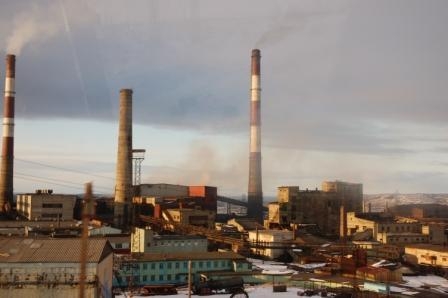
New Managing Director for Bellona Norway
The Board of the Bellona Foundation has appointed former Minister of Climate and the Environment Sveinung Rotevatn as Managing Director of Bellona No...
News

Publish date: December 20, 2017
News
Norilsk Nickel, which has time and again made its hometown one of the most polluted places on earth, has announced plans to slash dirty emissions – and finally has released a sketch of measures it will undertake to carry that out.
Norway would benefit too. An investment plan the industrial giant released in London late last month also presages a 50 percent cut in emissions wafting over Norway’s border from one of its smelting works in the Kola Peninsula industrial town of Nikel over the next several years.
That smelter is part of the Kola Mining and Metallurgy Company, a subsidiary of Norilsk Nickel, which has been a near constant source of pollution and worry for northern Norway and other Scandinavian countries.
Since the fall of the Soviet Union, Oslo has struggled with Moscow over harrowing emissions of sulfur dioxide polluting both sides of the Arctic border, but it was not until the release of the Norilsk Nickel investment plan that the company has offered any concrete measures for curtailing them.
 The industrial city of Nikel. (Photo: Anna Kireeva)
The industrial city of Nikel. (Photo: Anna Kireeva)
Vladimir Potanin, Norilsk Nickel’s billionaire CEO, told the audience in London that the new measures are aimed at making his historically polluting industry into example of green environmental responsibility.
It isn’t the first time he has made such a promise. Almost exactly a year ago, Potanin emerged in public to say he planned to invest $14 billion for environmental upgrades over the next seven years.
Since then, his lieutenants have been repeating the same figure while offering little in the way of how specifically that money would be spent. But they have said the efforts were meant to dovetail with Russia’s Year of Ecology, which is rapidly drawing to an end with mixed results.
Still, Potanin’s decision is primarily market driven, which rescue’s Norilsk Nickel’s declarations in London from being an empty promise. As the world’s largest nickel and palladium miner, Potanin has his eye on the electric car market and its dependence on lithium batteries, which contain nickel.
In June, Norilsk Nickel announced a partnership with Germany’s battery maker BASF. But the many prime electric carmakers – Tesla and Volvo among them – have long said they won’t buy materials for their green cars from companies that are trashing the environment.
For most of its life, Norilsk Nickel has fit that description, but with the new investment plan, it hopes to change that.
 Workers at Norilsk Nickel. (Photo: http://travelingyourdream.com)
Workers at Norilsk Nickel. (Photo: http://travelingyourdream.com)
In Norway, the company’s new green guilt is welcome. One of the commitments that followed Potanin’s announcement of last year has been a promise to reduce sulfur dioxide emissions coming from the Kola Mining and Metallurgy Company by 90 percent before 2023.
The investment plan laid out in London would do much – but not everything – to make good on that commitment by shutting down two of the town of Nikel’s three nickel smelting furnaces by 2019.
According to the plan, smelting in Nikel will now concentrate on producing a higher-grade nickel matte, which is what comes of the smelting process, rather than pushing out lower but larger quantities of so-called bulk matte.
The high-grade matte will then be shipped to finishing plants at another of the Kola Mining and Metallurgy Company’s industrial towns, Monchegorsk. Low-grade matte, by turns, will be sent directly to world markets.
The company predicts that these changes taken together will reduce overall volume of nickel smelted in Nikel, and thus the sulfur dioxide emissions.
But still, this is only a small piece of a much larger picture leaving environmentalists on both sides of the border guessing at what other measures the company has in mind to meet its goal of slashing 90 percent of the emissions coming from the Kola Peninsula facilities.
Potanin has mulled publicly that he might consider shutting down smelting in Nikel altogether, which would certainly bring the company within striking distance of its promise.
But that also projects a bleak outlook for workers in Nikel, the overwhelming majority of who have for generations worked at the smelters.
The hope now is that Norilsk Nickel will at some point in the new year issue a series of annual projected goals for its sulfur dioxide emissions leading up to 2023 so that environmentalists who follow its progress beyond the Year of Ecology have something to measure.
Until then, the London investment plan offers a good first attempt at this. Hopefully the company is only just getting started at showing the public its plans.

The Board of the Bellona Foundation has appointed former Minister of Climate and the Environment Sveinung Rotevatn as Managing Director of Bellona No...

Økokrim, Norway’s authority for investigating and prosecuting economic and environmental crime, has imposed a record fine on Equinor following a comp...

Our op-ed originally appeared in The Moscow Times. For more than three decades, Russia has been burdened with the remains of the Soviet ...

The United Nation’s COP30 global climate negotiations in Belém, Brazil ended this weekend with a watered-down resolution that failed to halt deforest...